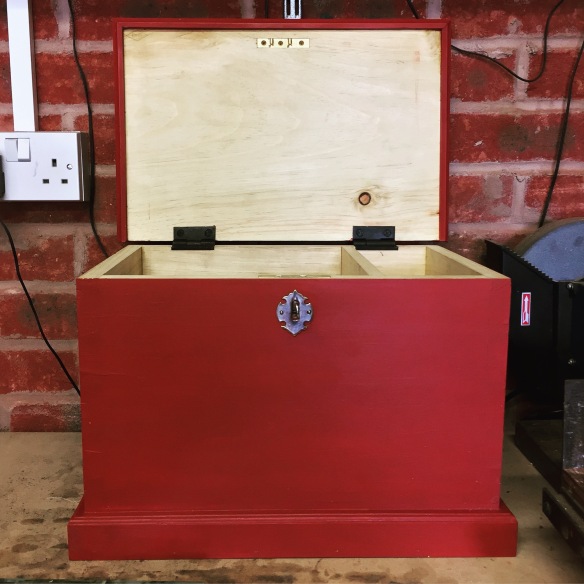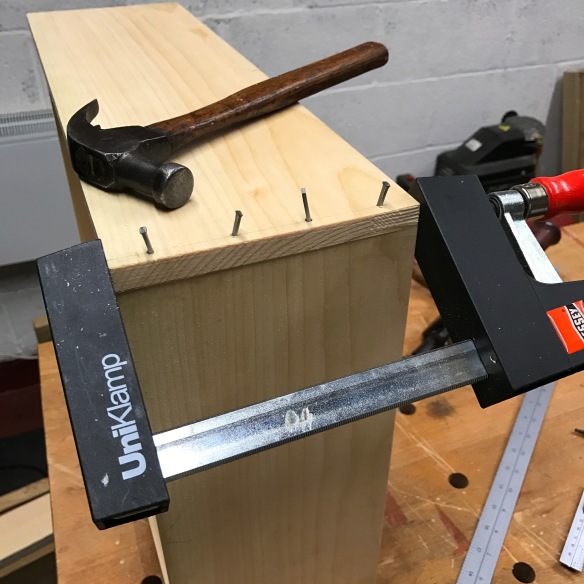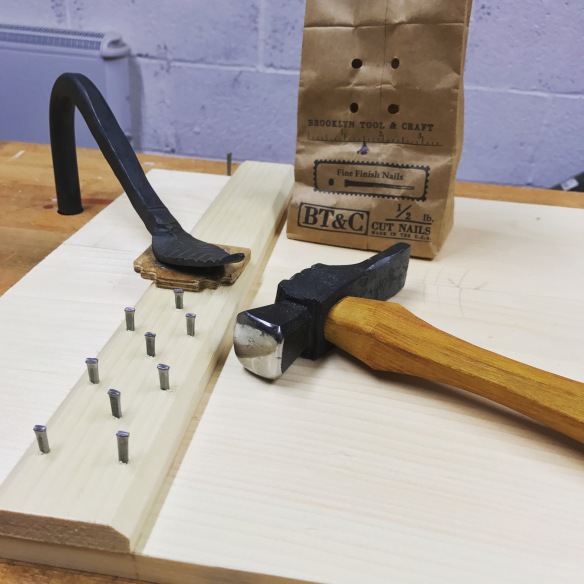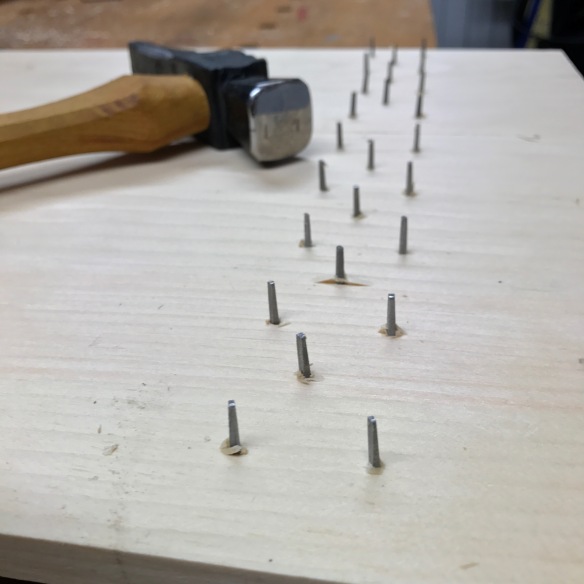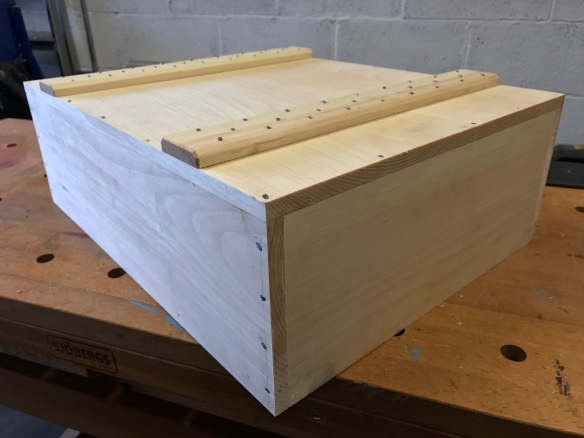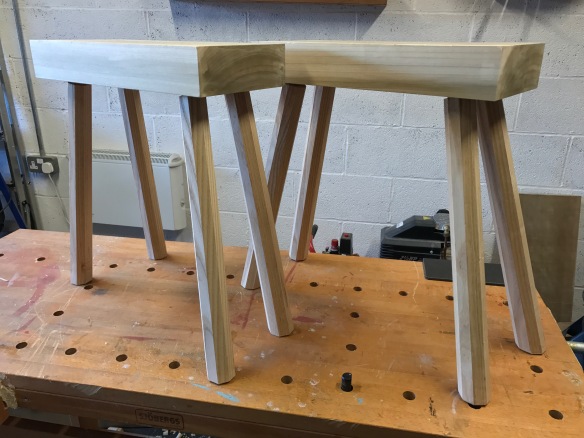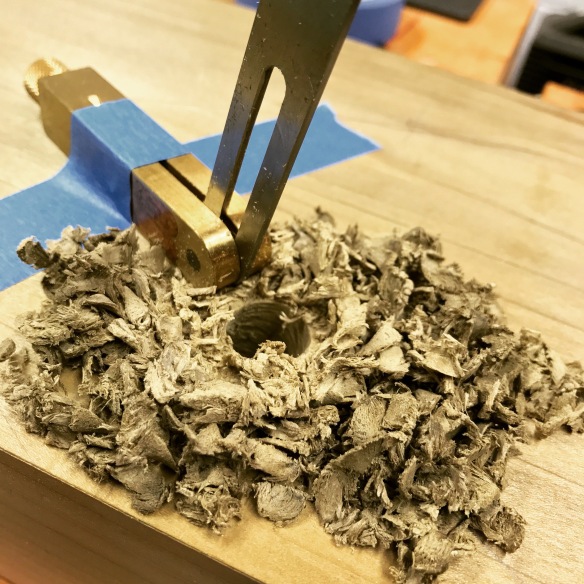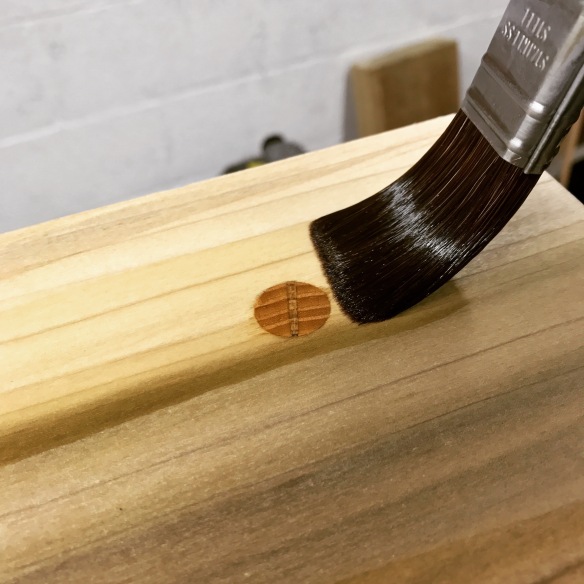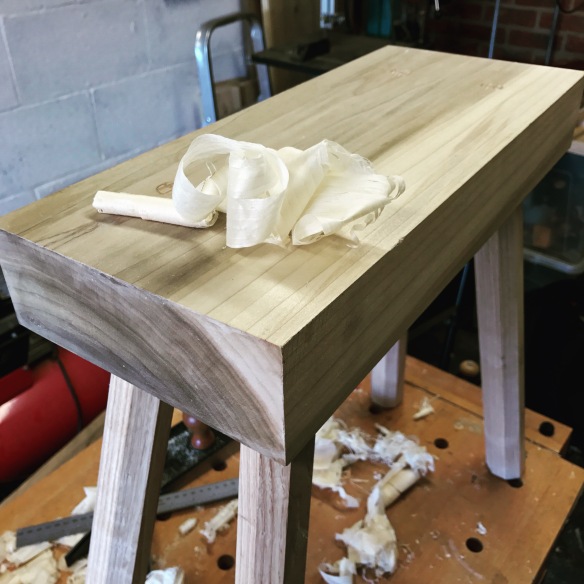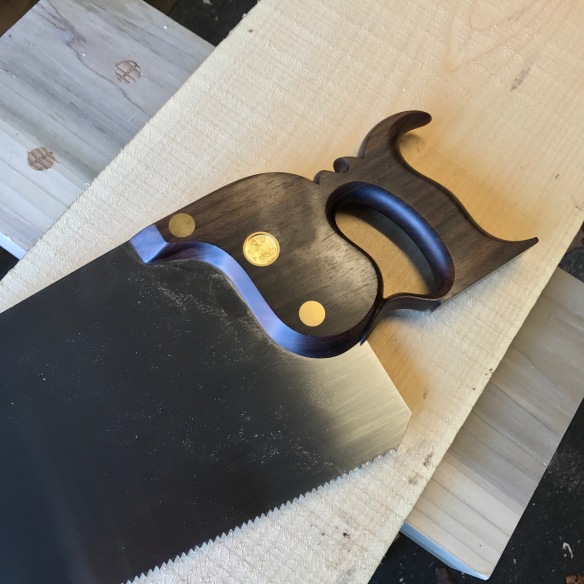I don’t often write posts dedicated to tools. Not because I don’t love woodworking tools (I do – nice tools are one of the best things about woodwork) but because on the whole I’m more interested in processes, in how the tools are used and what they contribute to a build. But sometimes it is fun to do something a bit different, and after clinching the bottom and lid for the Apprentice’s Memory Box I’ve been thinking about the the relationship I have with my hammers. Most people, I’m sure, will remember the post when Chris suggested that hammers were as personal as “things you put in your nether regions“. And while most woodworkers save their superlatives for planes and saws, a good hammer can be a beautiful thing.
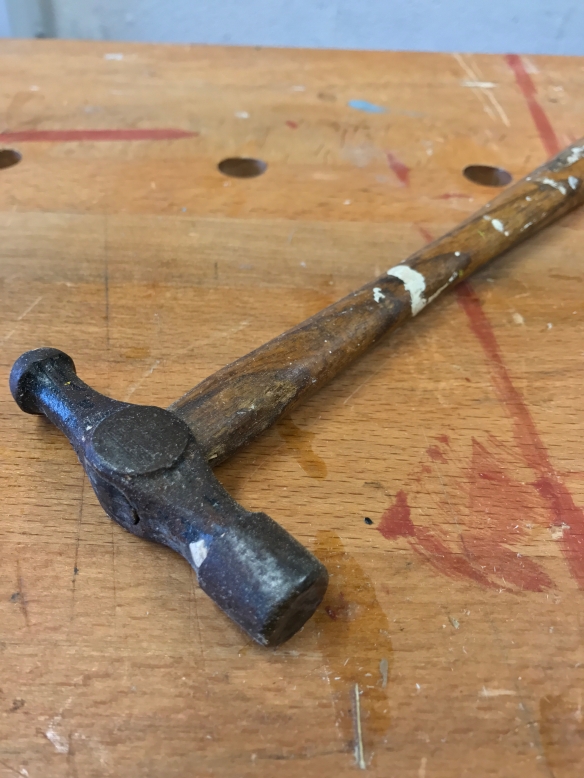
My first hammer – a dainty ball pein hammer which used to belong to my Grandfather. She ain’t pretty, but she does the job.
There’s not much call for hammers in lutherie, apart from seating frets in their slots (for which I use a dedicated fret hammer). Sure, a hammer is a useful thing to keep around, but it isn’t what I’d call essential. So for years the only hammer in my tool box was a small ball pein hammer that used to belong to my grandfather. After decades of hard use it is unlikely to win any beauty contests, but for my limited needs at the time it did pretty well. To be honest I’m not sure I asked any more of it than gently tapping shell inlay into a cavity, or knocking in fretboard locating pins prior to glue-up, but it worked fine for those rare moments I needed it, and is still in my Anarchist’s Tool Chest.
It was signing up to the Anarchist’s Tool Chest class in 2014 that made me realise I needed a beefier hammer. That dainty ball pein hammer was entirely inadequate when it came to knocking in 6d nails for the bottom boards, or even the 4d nails I used to hold the top dust seal in place. So I dived into the boxes of tools I’d inherited from my grandfather and found a larger claw hammer. The sticker said Stanley, but I’m guessing the hammer was a modern product – it feels pretty unbalanced, the handle is far from comfy, and the face is perfectly flat. Not that I noticed these imperfections at the time. As I say, I was inexperienced in the ways of nail punishing.
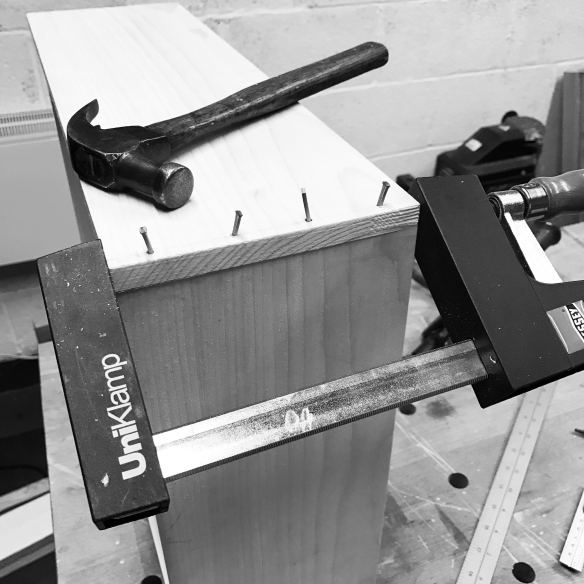
The small claw hammer by C Hammond of Philadelphia works like a dream when it comes to delicate work.
My first encounter with a great hammer came in late August 2015, just after the Apprentice was born. Among the gifts the Apprentice received from friends and family to celebrate being earthside, was a small claw hammer made in the nineteenth century by C Hammond of Philadelphia. This hammer currently resides in my Anarchist’s Tool Chest, on loan from the Apprentice (although it will be returned to her as soon as she enters the workshop). For driving headless brads and other small nails, this hammer is perfect – the balance is ideal for delicate work, and it instantly showed how lacking my other hammers were. It was a revelation, but one that meant I couldn’t go back to my Stanley hammer-shaped anchor. I needed a large hammer for driving nails into casework, particularly as I’d already resolved that 2016 would be the year I finally worked my way through the projects in the Joiner & Cabinet Maker.
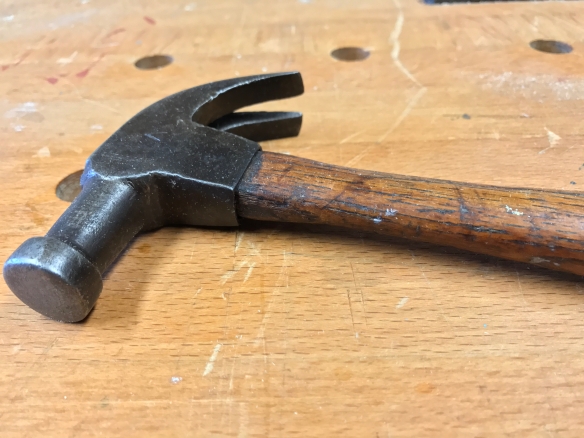
Up close – 8oz hammer by C Hammond
Unfortunately it is a long bus ride from Birmingham (U.K) to the nearest Mid-West Tool Collectors Association meeting, or most of Chris’ other suggestions to find a good hammer. So I decided that commissioning a blacksmith to make me a hammer to my exact specification would be the only way to go. The ideal opportunity presented itself when I started thinking about writing a follow up to the Dancing About Architecture article for Furniture & Cabinet Making. How could I put myself on the customer-side of the maker/customer relationship? I needed to commission something, but what? A larger hammer, obviously. I’ve admired John Switzer’s work for years, and knew that he could solve my current large hammer inadequacy. So we discussed a brief, including engravings of historic hammer patterns, and identifying all of my key requirements. Two months later, the last large hammer I will ever buy arrived from Beulah, Colorado. Like the smaller C Hammond hammer, the Black Bear Forge hammer is perfectly balanced and does exactly what I ask of it. At 16oz it drives larger nails with authority, the domed head reduces the risk of “frenching” the work, and the carved handle fits the hand just right.
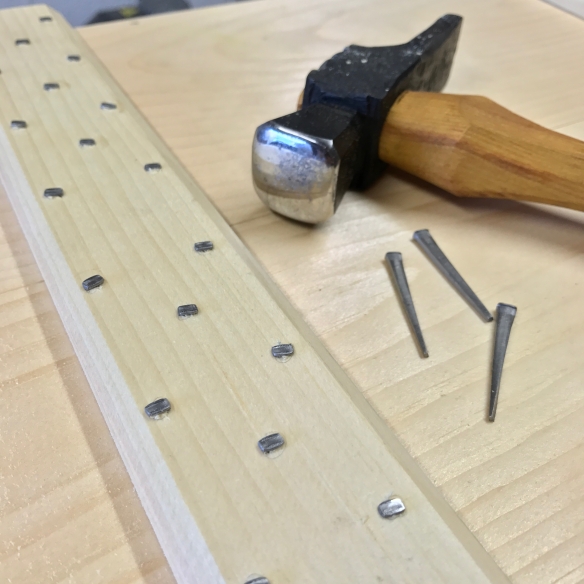
My 16oz hammer from Black Bear Forge. The last hammer I will ever buy – it is simply that good.
It is easy to look at something as apparently simple as a hammer, and to assume that all hammers are born equal. Afterall, it is essentially a chunk of metal on the end of a stick. But that would be to gravely underestimate the blacksmith’s art. Poise and balance are as important to hammers as they are to ballet dancers, and having had the privilege to use great hammers, as well as hammer-shaped objects, it seems to me that a great hammer wants you to get out of the way and let it do its job. I can clinch nails with my Black Bear Forge hammer till the cows come home, and never feel the slightest fatigue in my hammer hand or arm. A poorly balanced hammer on the otherhand requires steering and fighting in order to drive those nails, and tires you out faster than it should.
None of this is to to say that my perfect hammers are yours – Chris was right when he said that hammers were intensely personal. But making the move from a big box store hammer might just be a revelation. And if you can’t find a secondhand hammer you like? Well, there are some very talented blacksmiths out there…


